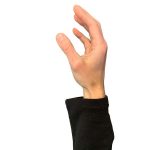Members and Patrons. Learn more or login:
Members and Patrons. Learn more or login:
This lesson is found in Patron Treasures, our collection of lessons exclusively for Feldenkrais Project Patron-level donors.
It’s also in our Lessons for Anxiety “little dip”.
It was recorded in The FP Weekly Zoom class on Dec 12, 2023 then edited to improve flow, clarity, and sound quality in this permanent audio version.
Our hands are often buzzing with busyness. We rarely slow down enough to explore how we can better support their actions with our whole being.
I designed and taught this lesson one December when students were talking about their anxiety building during a holiday rush.
Working gently and inquisitively with the hands is a great way to quiet your nervous system. Since they are such a large part of how we interact with the world, improving their integration can have a huge positive effect on our mind and all our actions. Read my post called Lessons for Anxiety for more on how this works.
Moshe Feldenkrais’s work, as he said, is taught to “make the impossible possible, the possible easy, and the easy esthetically pleasing to oneself.” This lesson is in the latter part of that spectrum. Though you may be surprised by how easy most or all of the movements are, they create a very potent learning opportunity.
Focus on moving beautifully, and enjoy the rich sensory world that emerges when you attend the fine perceptual details of easy actions.
Keep your attention wide and curious. Seek little movement pleasures in places far away from the parts of yourself you’re instructed to move.
If you need head support while lying on your back, be sure that it is smooth and level, and no more than you need for comfort.
You’re welcome to have your legs long or knees bent, changing as you wish. Later in the lesson leg positions will be specified.
Lying on your back, when you’re asked to stand up your forearm and hand, it’s like in this photo:
Forearm, wrist, and hand plumb with gravity, wrist loosely straight, fingers pointing loosely at ceiling, palm relaxed.
The elbow is bent 90 degrees and always rests on the ground.
As the forearm rotates on its axis the palm will face different walls of your room.
It resembles the movement of the arm you might make to open a doorknob, but the hand is in a more neutral position.





This was super fun. I could move my shoulders much better and smoother than I thought I could.
I am trying to do an hour a day of one of your lessons. I want to see what changes I can feel throughout my body after this intense 21 day exploration.
Exciting! Please let us know in additional comments what you discover as you go through this intensive you’ve created! I’m also on a daily ATM journey right now of 1-2 lessons every day, and I’m struck by how powerful the experience is.
This was profound.
I decided to do this one because my brain felt full from lots of forward planning I’ve had to do for an upcoming event and I needed something to relax my brain and help me feel more spacious.
Wow! The shift from being completely in my head with anxiety to being completely settled in my body was unbelievable! Like someone flipping a switch!
Also when I faced my palms toward each other the magnetism between them was surreal.
Thank you for these absolute gems.
I am fascinated to feel, through these explorations, how daily life habits cause me to tether my neck; and how that might originate in focused hand and shoulder actions. So that by playing with the whole body through the journey you take us on here, everything moves freely and together again, without any one part needing to hold on. So hard to describe this. The ending with one knee bent for the twist and reach was sublime! Thank you for your creativity.
My pleasure! A joy to hear all this detail about your self-discoveries and process. Thanks for commenting. It’s helpful that you’re modeling an aspect of the subjective Feldenkrais learning process: the useful things we simply notice after lessons, the spontaneous observations that give us a chance to sense and change our habits. You described this phenomenon very well, and I hope your comment is an inspiration for others!